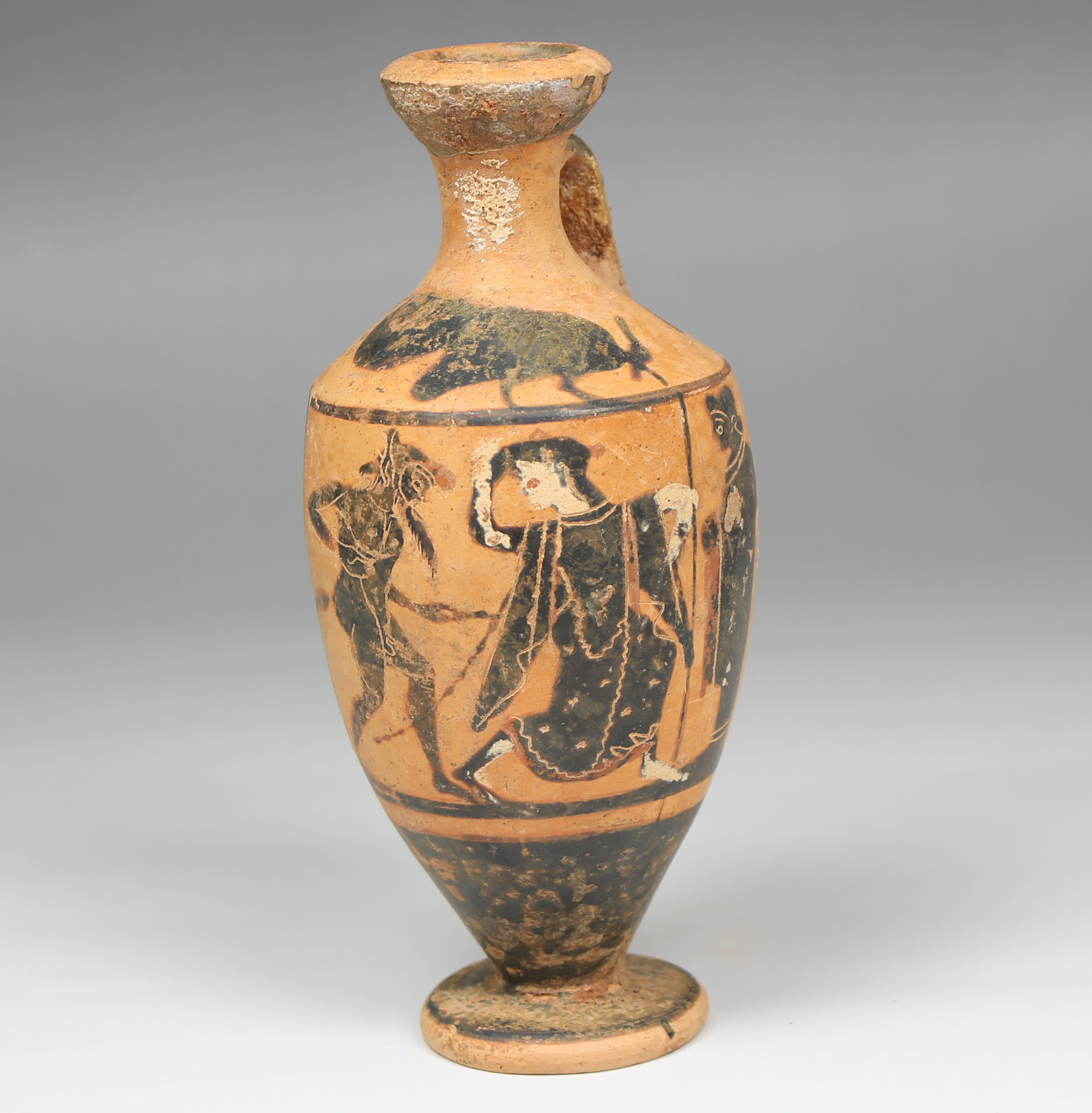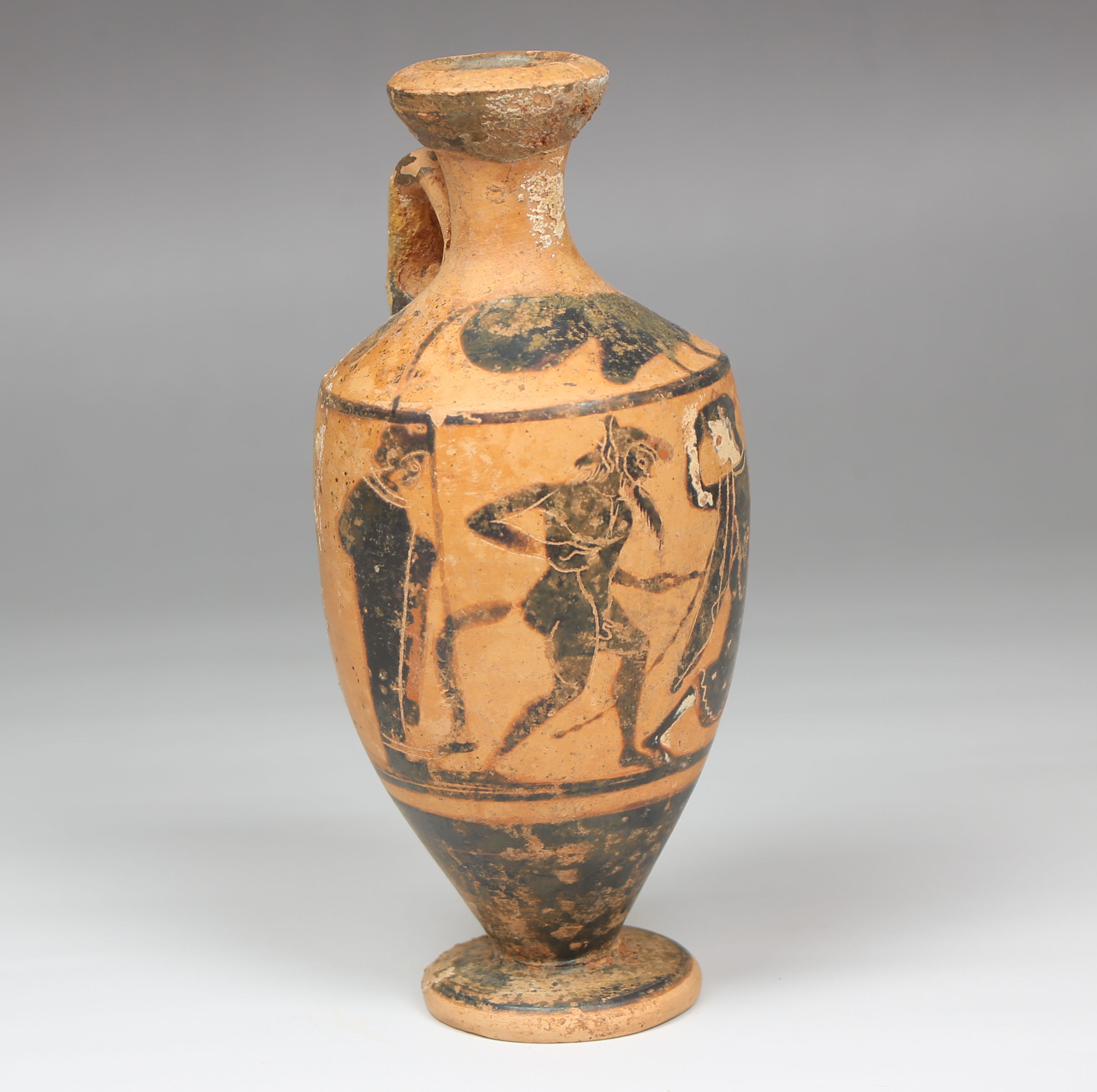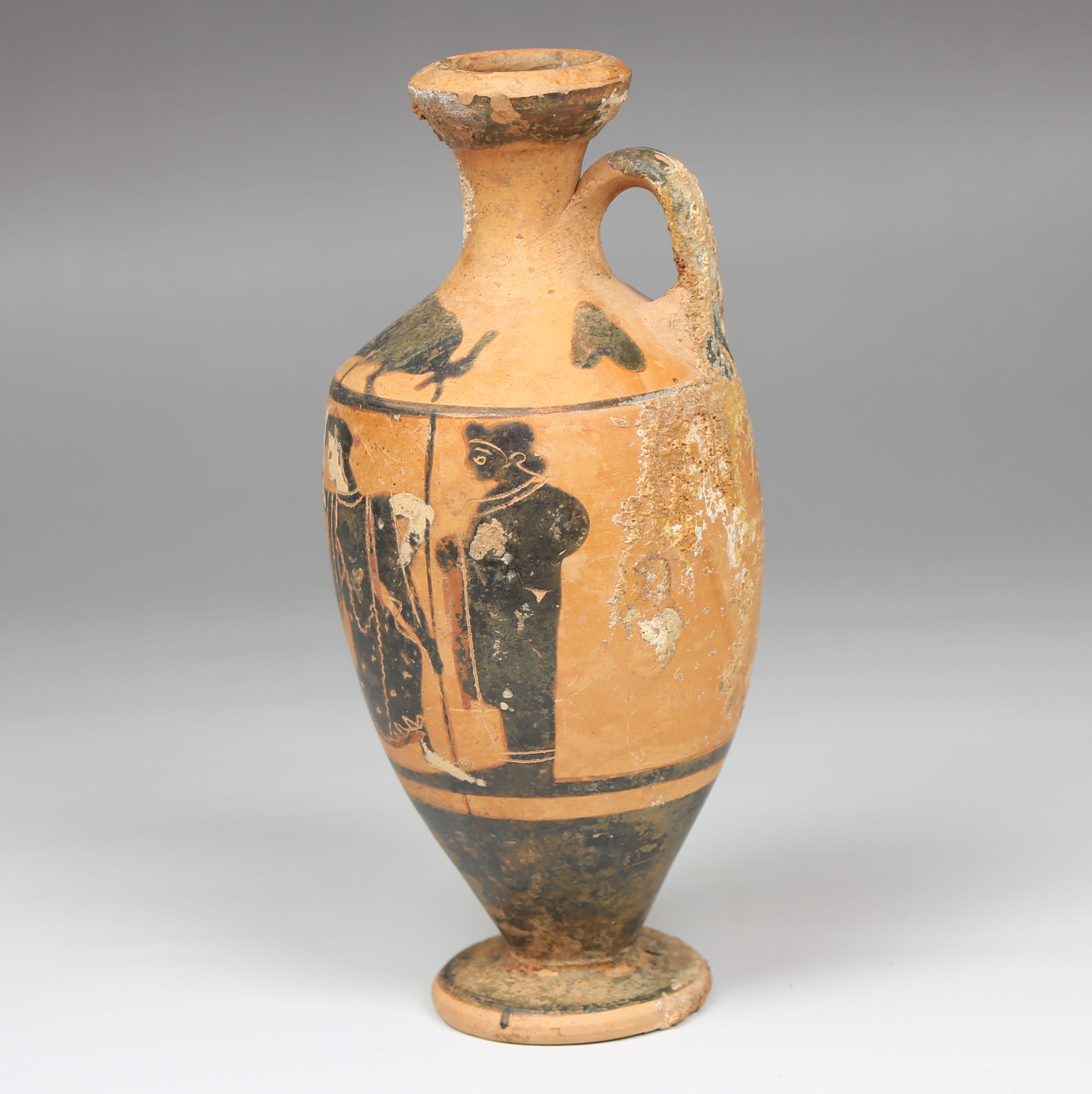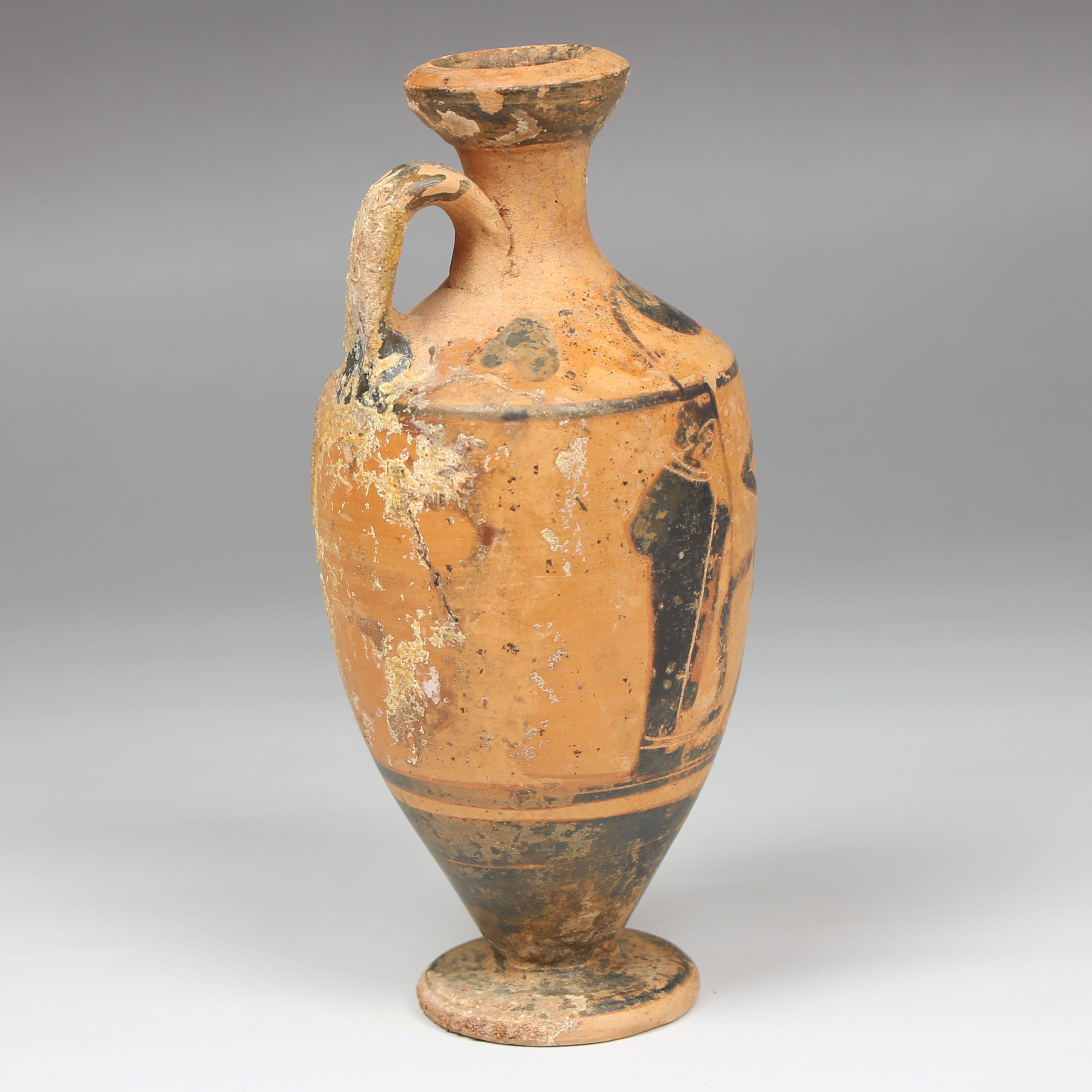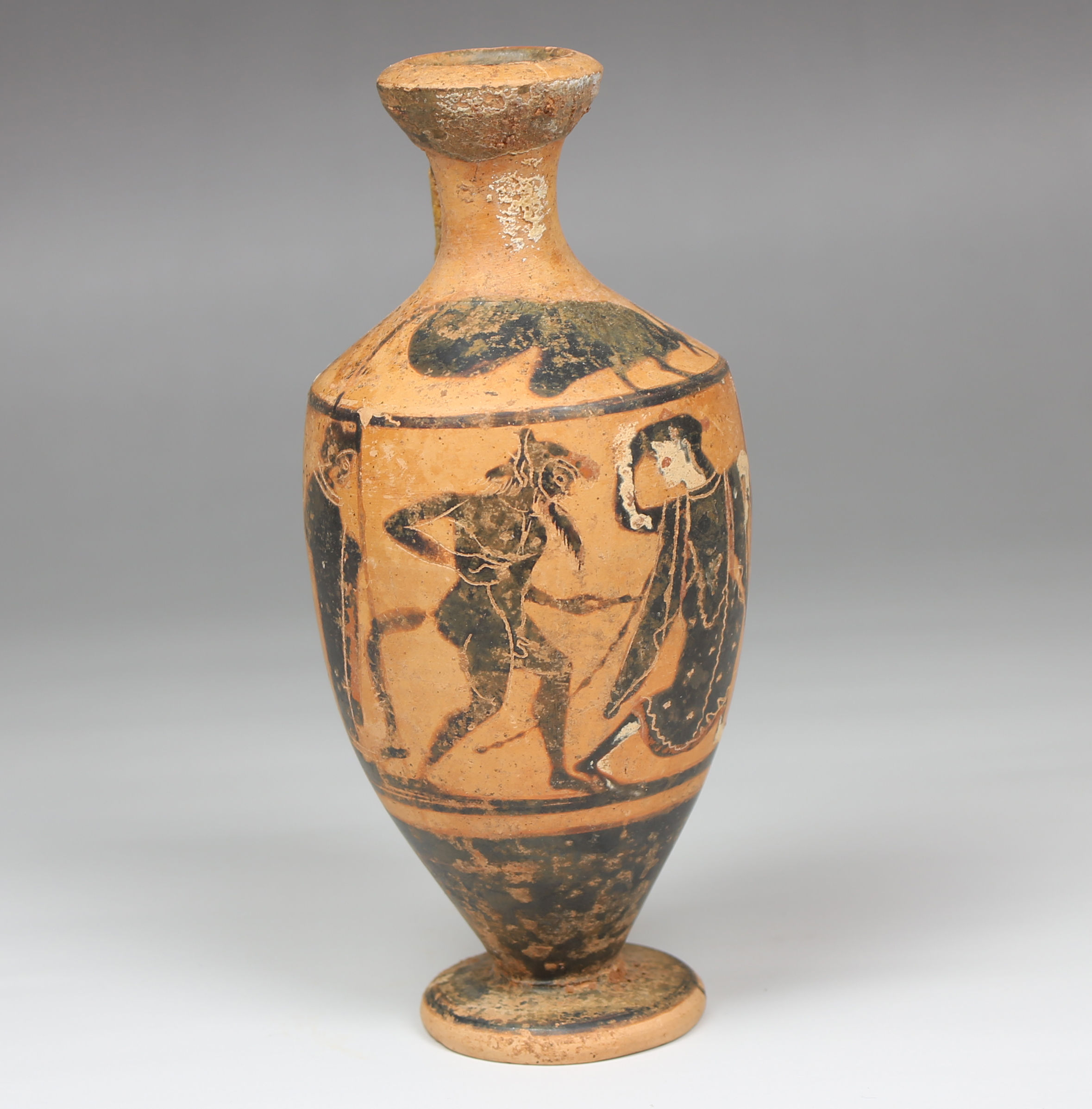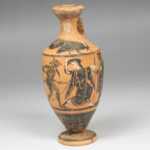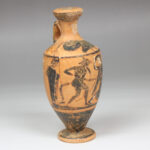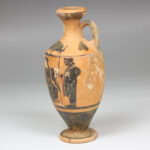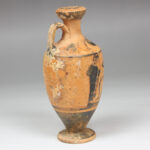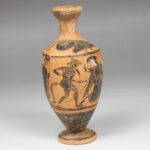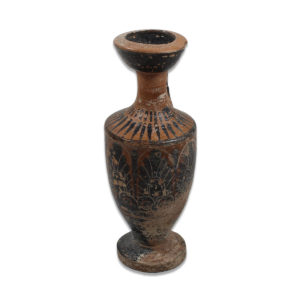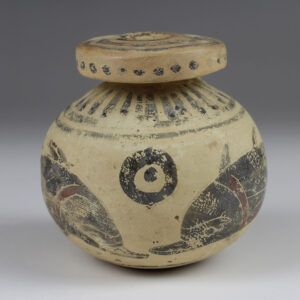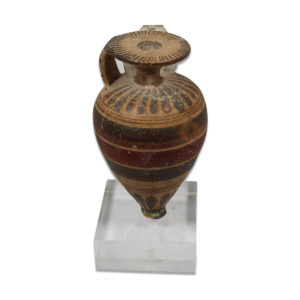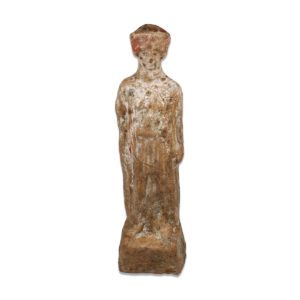Description
| ITEM | Lekythos, Cock Group, depicting mincing satyr and maenad between two draped youths |
| MATERIAL | Pottery |
| CULTURE | Greek |
| PERIOD | 510 – 500 B.C |
| DIMENSIONS | 130 mm x 58 mm diameter |
| CONDITION | Good condition |
| PROVENANCE | Ex German private collection, P.A., Munich, since 2021, previously from German private collection acquired before 2000s |
Greek lekythoi depicting a satyr and maenad, along with youths, offer intriguing glimpses into the mythical narratives, religious rituals, and social customs of ancient Greece. Lekythoi were a type of ancient Greek pottery vessel used primarily for storing oil, often placed in tombs as offerings to the deceased. These vessels were typically decorated with scenes from everyday life, mythology, or religious ceremonies, providing valuable insights into the cultural and artistic practices of ancient Greece.
The depiction of a satyr and maenad on a Greek lekythos suggests a scene from Greek mythology or religious worship. Satyrs were mythical creatures associated with the god Dionysus, known for their wild and hedonistic behavior. Maenads were female followers of Dionysus who participated in ecstatic rituals and celebrations known as Bacchanalia. The presence of youths in the scene may suggest a Dionysian procession or revelry, where participants, including satyrs, maenads, and youths, engaged in music, dance, and wine-drinking as part of the worship of Dionysus.
The imagery of a satyr and maenad on a Greek lekythos may also carry symbolic meanings related to fertility, rebirth, and the cycle of life. Dionysus, as the god of wine, fertility, and ecstasy, was often associated with the natural world and the changing seasons. Scenes depicting satyrs and maenads celebrating Dionysian rites may symbolize the renewal of life and the cyclical rhythms of nature, as well as the release of inhibitions and the pursuit of joy and pleasure.


